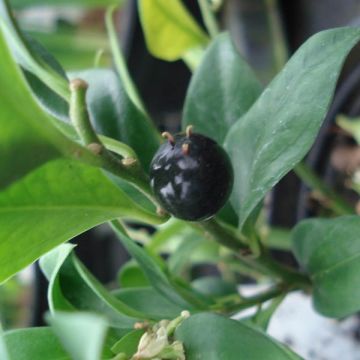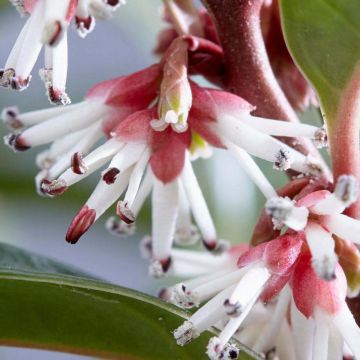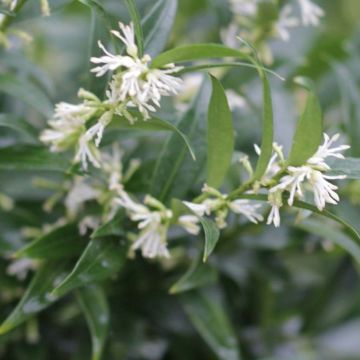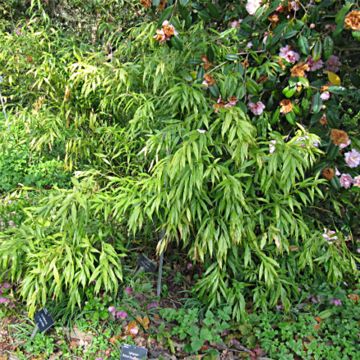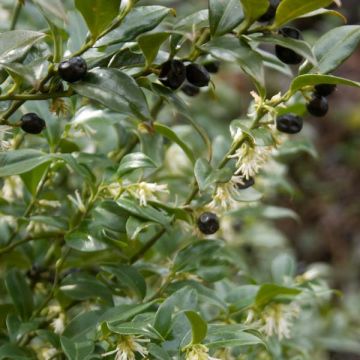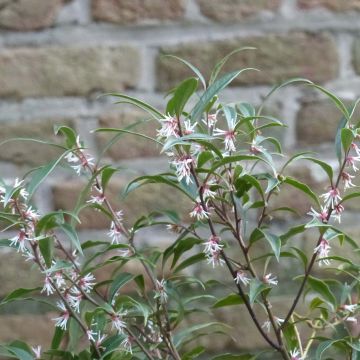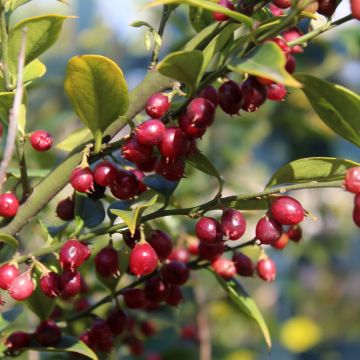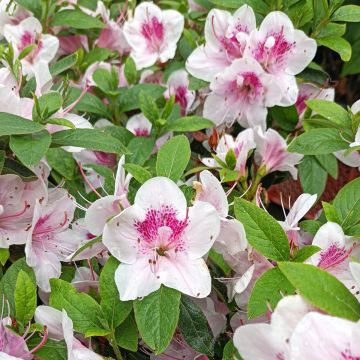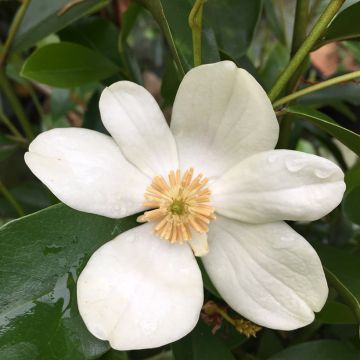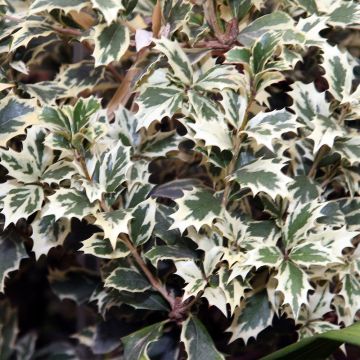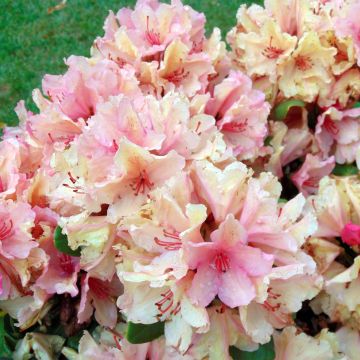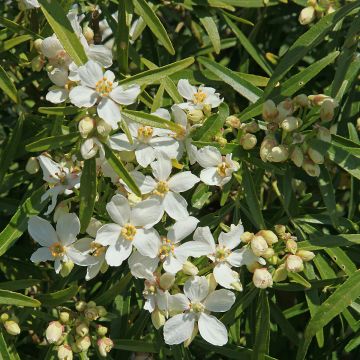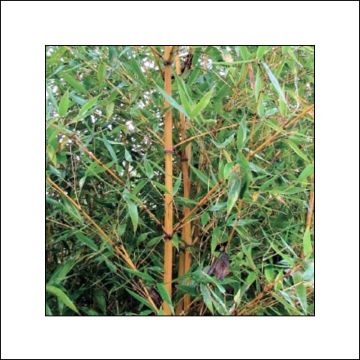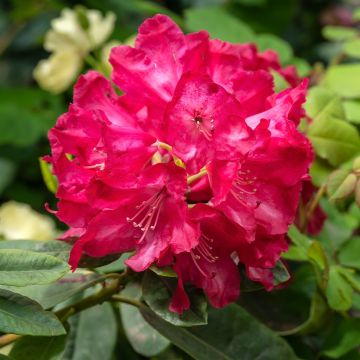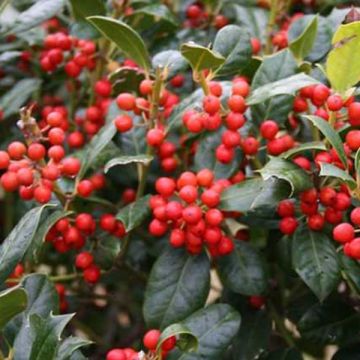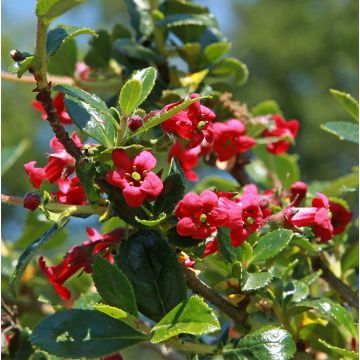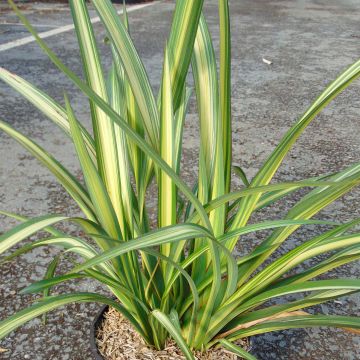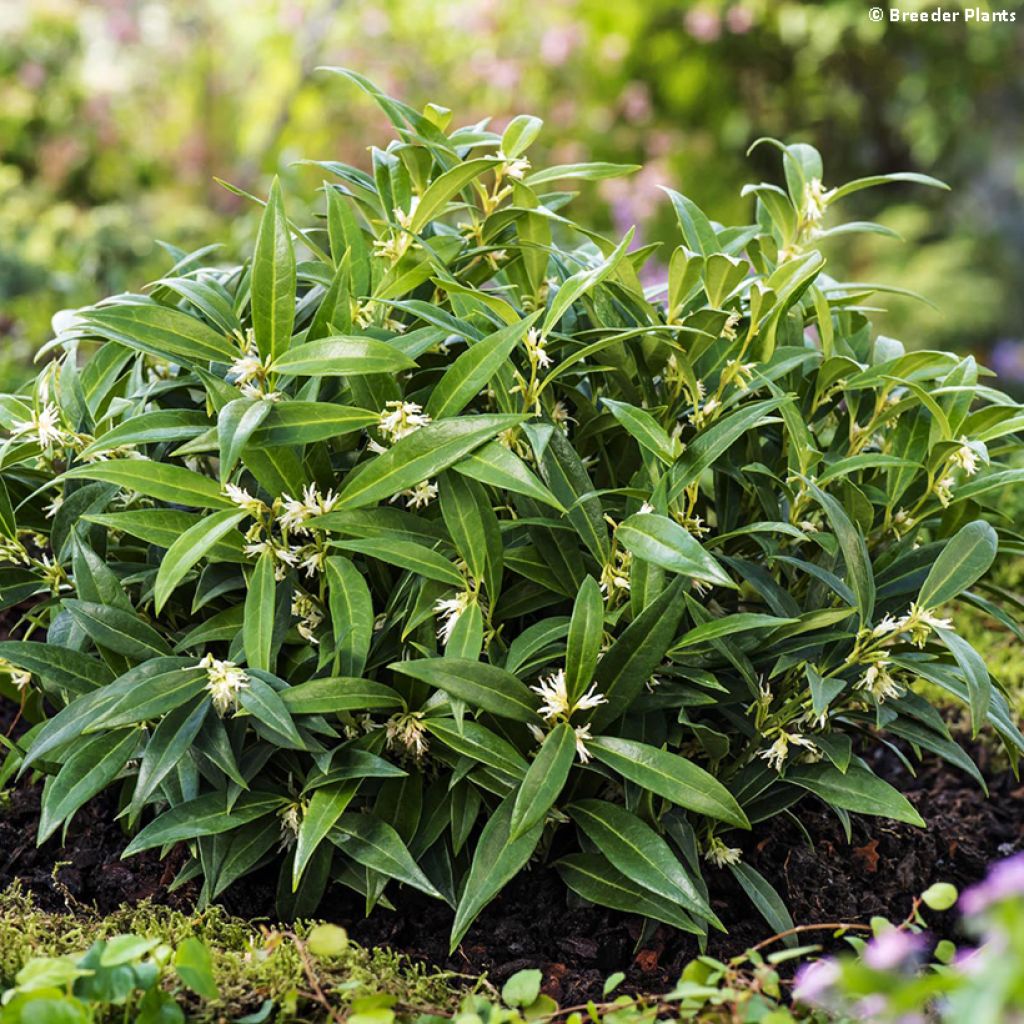

Sarcococca hookeriana var.humilis Fragrant Valley
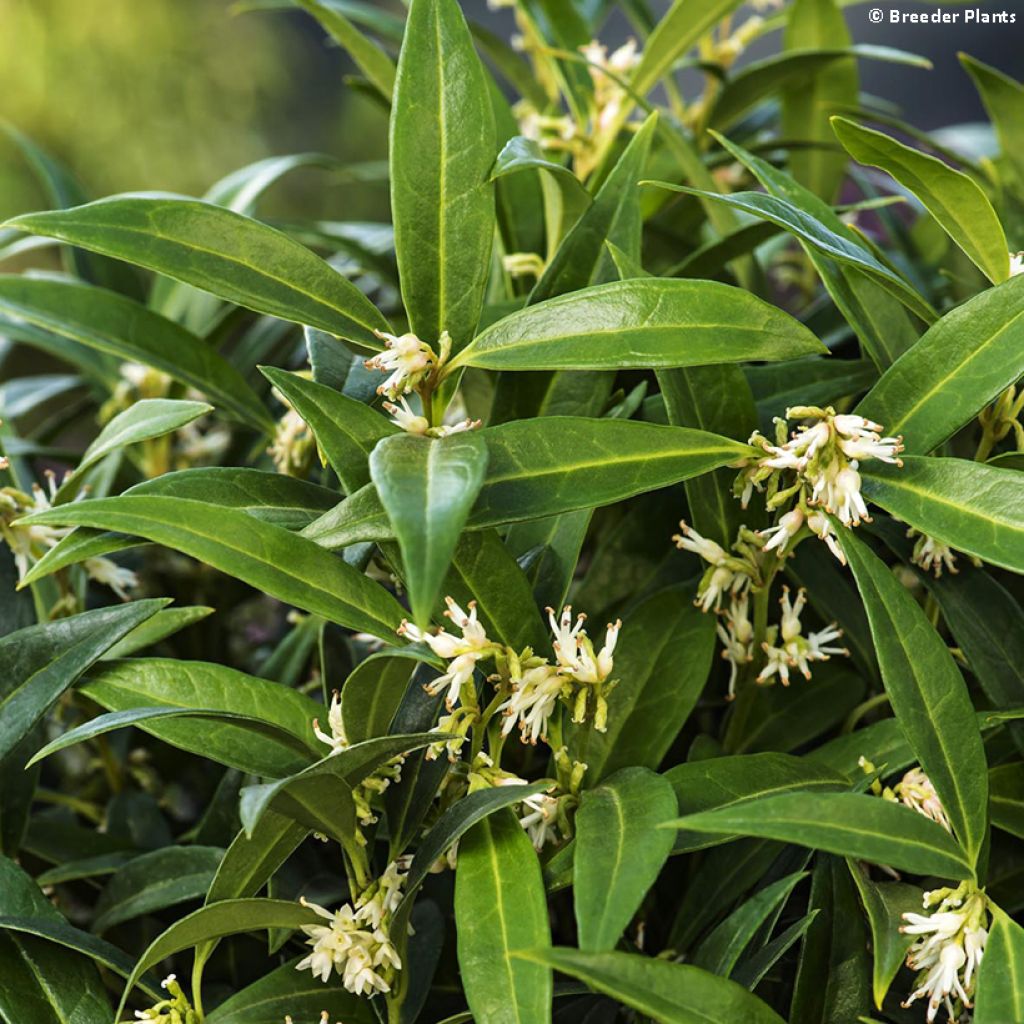

Sarcococca hookeriana var.humilis Fragrant Valley
Sarcococca hookeriana var. humilis Fragrant Valley
Sarcococca hookeriana var.humilis Fragrant Valley ® 'Sarsid3'
Sweet Box, Dwarf Sweet Box
The young plant delivered was in perfect condition, covered in fragrant flowers. True to the description.
Alain, 25/02/2023
Why not try an alternative variety in stock?
View all →This plant carries a 24 months recovery warranty
More information
We guarantee the quality of our plants for a full growing cycle, and will replace at our expense any plant that fails to recover under normal climatic and planting conditions.
From €5.90 for pickup delivery and €6.90 for home delivery
Express home delivery from €8.90.
Does this plant fit my garden?
Set up your Plantfit profile →
Description
Sarcococca hookeriana var.humilis Fragrant Valley is distinguished by its low, dense and spreading growth, not exceeding 50 cm (20in) in height, and its long late winter flowering, accompanied by a sweet and light fragrance. Extremely elegant with its glossy dark green narrow leaves, it is a magnificent evergreen bush. This Hooker's Sarcococca prefers shade or partial shade under the foliage of deciduous trees for example, which will protect it from strong sunlight, where it will easily establish itself among the roots. Planted near a window or a frequented area, from January to March, the flowering exudes a beautiful sweet fragrance. It grows slowly but steadily in almost any well-drained soil but performs best in acidic to neutral soil, rich in humus and consistently moist.
Sarcococca hookeriana var.humilis, commonly known as Hooker's Sarcococca or Himalayan Sweet Box, is a branching rhizomatous shrub belonging to the boxwood family. It is native to a vast region ranging from Afghanistan to the Himalayas and northeastern China. It is commonly found in the evergreen forests of these regions. The Fragrant Valley variety is a recent variety discovered in 2002. It originated from a random sowing of Sarcococca hookeriana var. humilis and was selected by Gurjit Sidhu of Sidhu & Sons Nursery in Mission, British Columbia, Canada.
Sarcococca hookeriana var.humilis Fragrant Valley forms a small, dense, dwarf bush that will not exceed 50 to 60 cm (20 to 24in) in height. It is a rhizomatous species with sucker-forming and trailing branches that produce numerous shoots, ensuring a spread of 0.80 to 1 m (3ft). Its growth is quite slow. Its dense foliage is composed of narrow, elliptical, pointed leaves measuring 5 to 7 cm (2 to 3in) long and 1 to 1.5 cm (1in) wide. These evergreen leaves are only renewed after several years, thus forming a very dense and well-furnished clump. In January, the dormant flower buds open as soon as the temperatures rise for a few days. The flowering consists of a multitude of tiny white and pink tubular flowers grouped in small clusters blooming in the axils of the leaves. They measure no more than 3 to 5 mm (1in) in length, have no petals, and only show very developed pale yellow-green stamens. They release a strong and sweet fragrance for several metres, resembling that of hyacinth. This fragrant flowering lasts for about 2 months, depending on the climate. When pollinated, the female flowers produce small dark red to black, shiny fruits, non-edible but non-toxic.
In the category of Sarcococcas, there is a great diversity of varieties, each as unique as the next, the Sarcococca hookeriana var.humilis Fragrant Valley, stands out for its attractive spreading habit and delicately scented flowering. It prefers acidic soils and shade from strong sunlight, making it a great companion for ferns, witch hazels, skimmias, aucubas, andromedas and azaleas. Placed near a terrace, along a path or above a wall, its highly fragrant flowering will enliven a shady rockery, a border or an understory bed in winter. Cultivated in pots, it will perfume balconies, terraces or patios.
Report an error about the product description
Plant habit
Flowering
Foliage
Botanical data
Sarcococca
hookeriana var.humilis
Fragrant Valley ® 'Sarsid3'
Buxaceae
Sweet Box, Dwarf Sweet Box
Cultivar or hybrid
Other Sarcococcas
Planting and care
Sarcococca hookeriana var.humilis Fragrant Valley is quite undemanding. While it is much more beautiful in coastal climates, the Sarcococca can be grown everywhere. It is a fairly hardy bush that can withstand occasional temperatures around -15°C (5°F) and thrives in shady or semi-shady locations.
From October to November and from March to June, plant it in light and dry soil, sheltered from strong and drying winds. It does not tolerate limestone, so place it in a humus-rich, slightly acidic, moist, but well-drained soil. While the Sarcococca can be associated with ericaceous plants, it also grows very well in neutral soil.
Dig a hole at least three times the size of the root ball. It requires good drainage (its roots do not like stagnant moisture) of about twenty centimetres at the bottom of the planting hole: add compost or ericaceous soil to the garden soil, and possibly some sand to lighten it. Spread organic mulch to finish. Water abundantly immediately after transplantation and for two to three weeks. A few summer waterings are sufficient in case of prolonged drought. Once well-rooted, it shows good resistance to drought. In cold regions, mulch its base during the first winters or in case of exceptional cold.
Plant in a container of about twenty litres filled with a mixture of potting soil and 20% sand. Placed on a shady terrace, close to the house, you will enjoy its fragrance all winter long.
Feeding consists of applying compost on the surface in autumn. For potted plants, repotting every 5 years will be necessary. It is hardy, tolerates pollution well and is never affected by parasites or diseases.
Planting period
Intended location
Care
-
, onOrder confirmed
Reply from on Promesse de fleurs
Evergreen shrubs
Haven't found what you were looking for?
Hardiness is the lowest winter temperature a plant can endure without suffering serious damage or even dying. However, hardiness is affected by location (a sheltered area, such as a patio), protection (winter cover) and soil type (hardiness is improved by well-drained soil).

Photo Sharing Terms & Conditions
In order to encourage gardeners to interact and share their experiences, Promesse de fleurs offers various media enabling content to be uploaded onto its Site - in particular via the ‘Photo sharing’ module.
The User agrees to refrain from:
- Posting any content that is illegal, prejudicial, insulting, racist, inciteful to hatred, revisionist, contrary to public decency, that infringes on privacy or on the privacy rights of third parties, in particular the publicity rights of persons and goods, intellectual property rights, or the right to privacy.
- Submitting content on behalf of a third party;
- Impersonate the identity of a third party and/or publish any personal information about a third party;
In general, the User undertakes to refrain from any unethical behaviour.
All Content (in particular text, comments, files, images, photos, videos, creative works, etc.), which may be subject to property or intellectual property rights, image or other private rights, shall remain the property of the User, subject to the limited rights granted by the terms of the licence granted by Promesse de fleurs as stated below. Users are at liberty to publish or not to publish such Content on the Site, notably via the ‘Photo Sharing’ facility, and accept that this Content shall be made public and freely accessible, notably on the Internet.
Users further acknowledge, undertake to have ,and guarantee that they hold all necessary rights and permissions to publish such material on the Site, in particular with regard to the legislation in force pertaining to any privacy, property, intellectual property, image, or contractual rights, or rights of any other nature. By publishing such Content on the Site, Users acknowledge accepting full liability as publishers of the Content within the meaning of the law, and grant Promesse de fleurs, free of charge, an inclusive, worldwide licence for the said Content for the entire duration of its publication, including all reproduction, representation, up/downloading, displaying, performing, transmission, and storage rights.
Users also grant permission for their name to be linked to the Content and accept that this link may not always be made available.
By engaging in posting material, Users consent to their Content becoming automatically accessible on the Internet, in particular on other sites and/or blogs and/or web pages of the Promesse de fleurs site, including in particular social pages and the Promesse de fleurs catalogue.
Users may secure the removal of entrusted content free of charge by issuing a simple request via our contact form.
The flowering period indicated on our website applies to countries and regions located in USDA zone 8 (France, the United Kingdom, Ireland, the Netherlands, etc.)
It will vary according to where you live:
- In zones 9 to 10 (Italy, Spain, Greece, etc.), flowering will occur about 2 to 4 weeks earlier.
- In zones 6 to 7 (Germany, Poland, Slovenia, and lower mountainous regions), flowering will be delayed by 2 to 3 weeks.
- In zone 5 (Central Europe, Scandinavia), blooming will be delayed by 3 to 5 weeks.
In temperate climates, pruning of spring-flowering shrubs (forsythia, spireas, etc.) should be done just after flowering.
Pruning of summer-flowering shrubs (Indian Lilac, Perovskia, etc.) can be done in winter or spring.
In cold regions as well as with frost-sensitive plants, avoid pruning too early when severe frosts may still occur.
The planting period indicated on our website applies to countries and regions located in USDA zone 8 (France, United Kingdom, Ireland, Netherlands).
It will vary according to where you live:
- In Mediterranean zones (Marseille, Madrid, Milan, etc.), autumn and winter are the best planting periods.
- In continental zones (Strasbourg, Munich, Vienna, etc.), delay planting by 2 to 3 weeks in spring and bring it forward by 2 to 4 weeks in autumn.
- In mountainous regions (the Alps, Pyrenees, Carpathians, etc.), it is best to plant in late spring (May-June) or late summer (August-September).
The harvesting period indicated on our website applies to countries and regions in USDA zone 8 (France, England, Ireland, the Netherlands).
In colder areas (Scandinavia, Poland, Austria...) fruit and vegetable harvests are likely to be delayed by 3-4 weeks.
In warmer areas (Italy, Spain, Greece, etc.), harvesting will probably take place earlier, depending on weather conditions.
The sowing periods indicated on our website apply to countries and regions within USDA Zone 8 (France, UK, Ireland, Netherlands).
In colder areas (Scandinavia, Poland, Austria...), delay any outdoor sowing by 3-4 weeks, or sow under glass.
In warmer climes (Italy, Spain, Greece, etc.), bring outdoor sowing forward by a few weeks.

































